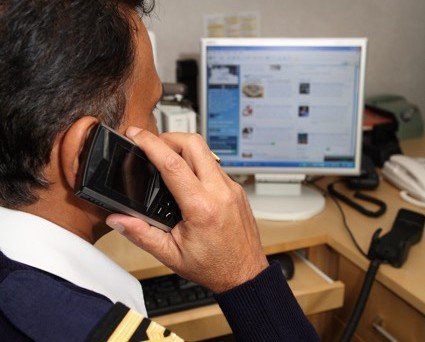For those in peril

In the world of modern communications, we have come to expect constant contact, or at least prompt information. So the report that communication was lost with the ill-fated El Faro at some point before it sank raises the question of whether and how contact with a ship in distress can be maintained.
Shortly before the sinking at about 0700 hrs on October 1, the ship’s captain, Michael Davidson, reported a maritime emergency on the vessel. Seventeen minutes appear to have passed between the time of his report and the US- flag roro’s transmission of its last known location. It appears that this final alert was actually three electronic transmissions from the Ship’s Security Alert System (SSAS); an Inmarsat-C alert; and a transmission from an Emergency Position Indicating Radio Beacon (EPIRB). Because of the loss of 33 lives, and the fact that the ship was registered in the United States, the degree of public and professional interest in some of the technical aspects surrounding this tragedy has been far greater than if the ship had not been American, and had been lost far from the United States.
Ship-to-shore, and ship-to-ship communications have many modern aspects. Worldwide dependence on Global Navigation Satellite Systems (GNSS) continues to grow. While sophisticated systems continue to be built around the ever-growing demand for the transfer of data to and from ships, the El Faro case illustrates the need for a careful examination of the industry’s reliance on GNSS for positioning, navigation and timing (PNT). Modern communications at sea rely heavily on GPS (Global Positioning Systems), to provide information and operational safety. While GPS is an accepted and familiar tool, it is acknowledged that a number of factors can temporarily or permanently disrupt transmissions. The United States Government Accountability Office (GAO) has wrestled with the impact that might result from GPS signal loss. This concern, which is likely to be raised at the National Transportation Safety Board’s, and US Coast Guard’s, inquiries into the loss of El Faro, is not new.
When the US government, in 2010, took steps to terminate the nation’s LORAN (broadly, Long Range Navigation) program, there were those in the Coast Guard as well as Congress who questioned the wisdom of doing so. It is understandable that in the age of GPS, AIS, Vessel Position Monitoring Systems (VPMS) and VSAT Broadband, the US Budget Bureau would recommend the phase out of “outdated systems such as the terrestrial-based long range radionavigation (LORAN-C) operated by the US Coast Guard, resulting in an offset of $36m in 2010 and $190m over five years”.
While one set of accountants recommended termination of LORAN-C, the Government Accountability Office discovered that there were major problems that would be caused by the expected loss of GPS signal capacity. It may well be that the loss of El Faro will raise awareness of the inadequacy of vessel-to-shore voice and text communications.
Today, broadband satellite systems carry both voice and data traffic. These are generally managed by Inmarsat, and are used for communications with the office, coastal safety agencies, and third parties. Industry observers find fault with the fact that most communications from and to ships are still based in email, telephone, and to some extent modernised versions of the telex machine.
Some shipowners and managers have gone as far as developing their own software and systems to connect their ships to onshore networks, integrated with the Vessel Management System and their Safety Management Systems. Modern commercial vessels produce an ever-increasing quantity of documentation and data, imposing a growing burden on existing communication links. The extent to which voice communication is ‘squeezed’ requires more study, particularly the degree to which the technology has kept pace with the need to get information from ashore to the ship’s officers, including access to weather routing systems, and information from the ship to management ashore.
Most important, the developing broadband-based technology must be appropriate for use by modern seafarers. Too much technology and not enough training can defeat the use of basic voice and text messaging during a crisis event, such as the one confronted by El Faro’s officers. We can only imagine the pressures imposed upon them in their last moments.

Spark, Radio Officer, removal from ships is greed and ignorance…, MSMC?? — bull
ATB
Any idea why the last AIS position for El Faro was 0401 UTC? That’s 8 hours before the Captain made his call to TOTE, am I correct? Equipment failure? Range/transmission issues?
I don´t agree wholly. (Perhaps due to my poor english understanding?)
A lawyer too much inside navigational matters? Or; contrary to the old times when I was at sea, the channel / Frecuency used to trasmit S.O.S. became public trafic today ?. Can be said that again silent periods shoud exist?
LORAN is LORAN and sextant is sextant. What time where those.
Also the Radio Officer was over long time ago.
I don´t like that, but unmanned vessels will come true soon, and I will be buried long before.
Excellent piece by Clay, reminding us of two important things. SatComs as good as they are, still are comparatively basic, compared to what everyone is ideas to ashore. Secondly, for all you drone ship, robot ship, or autonomous ship proponents….this is a vivid reminder of what you are up against. The 110% reliable and redundant comms set up with your ship on the other side of the world has a long way to go before reality.